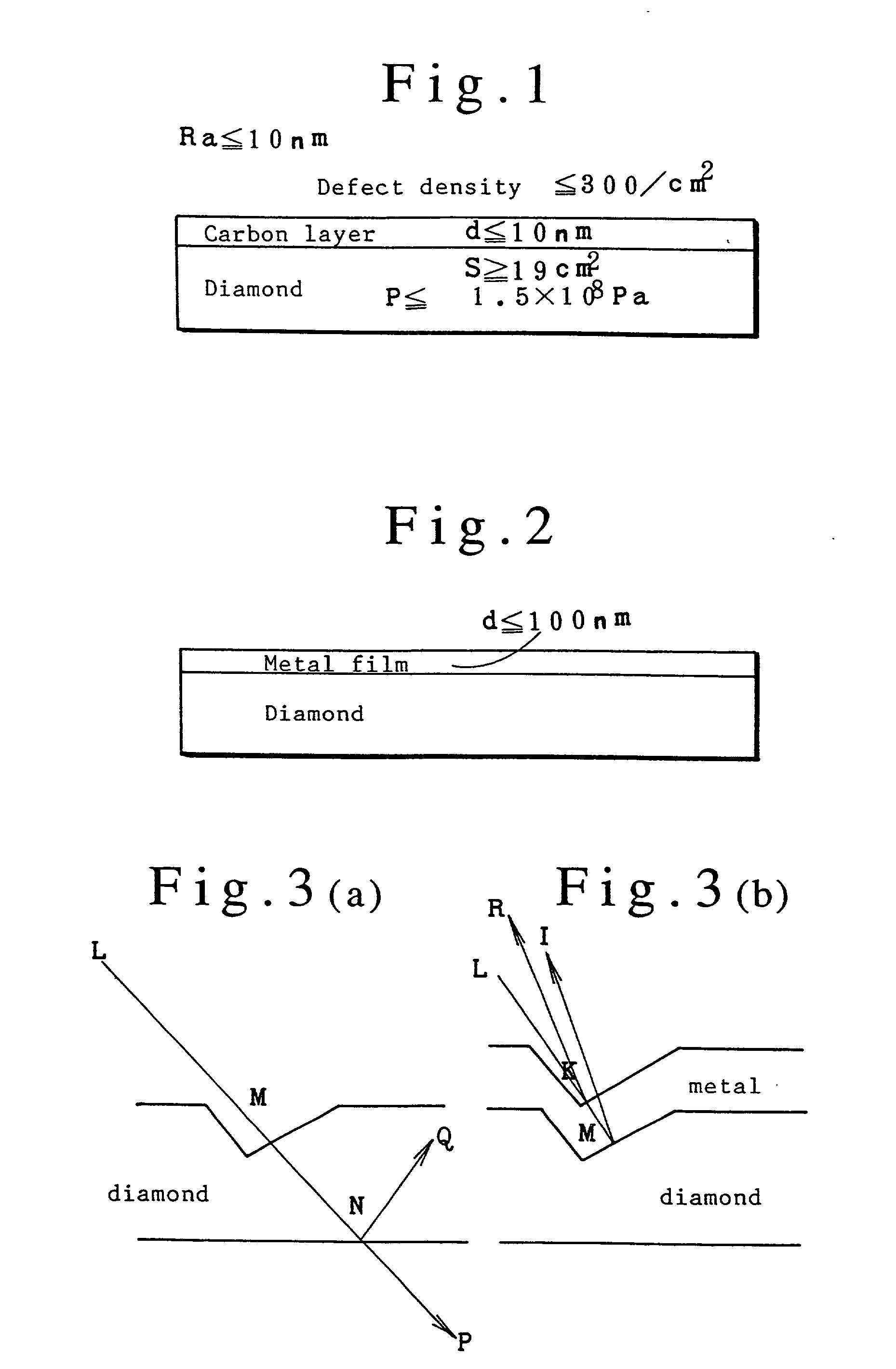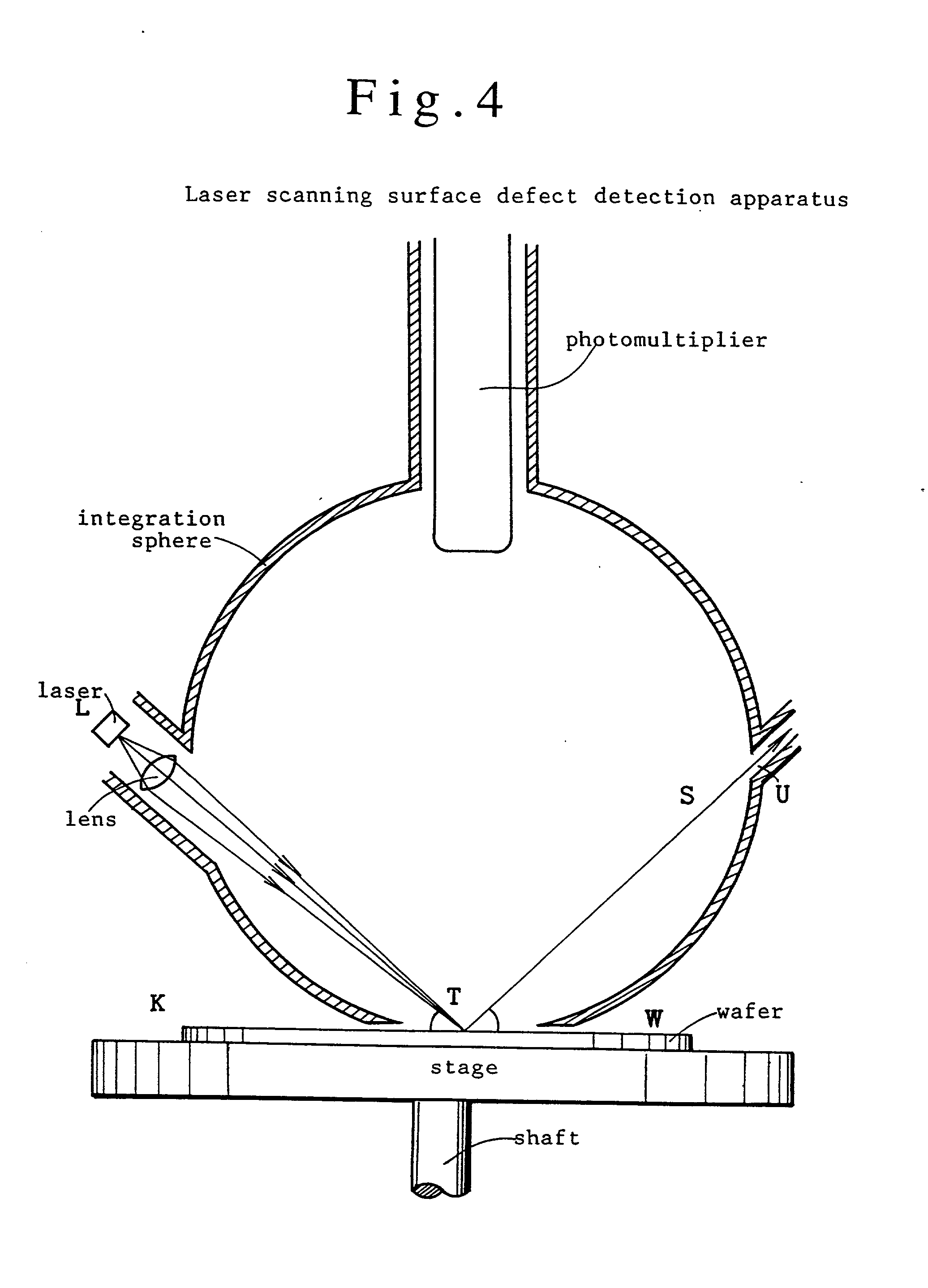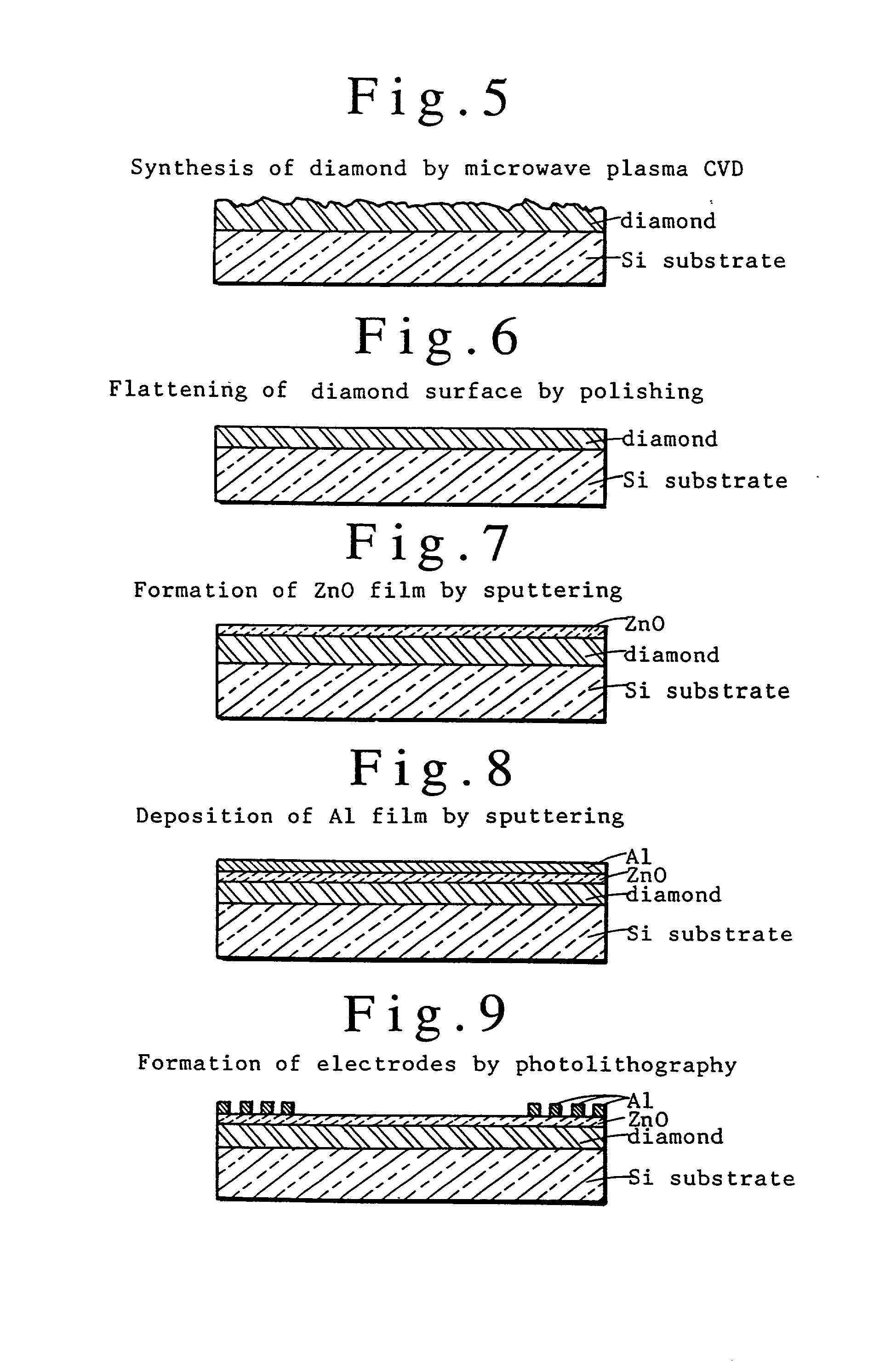Diamond wafer, method of estimating a diamond wafer and diamond surface acoustic wave device
a diamond wafer and surface acoustic wave technology, applied in the direction of crystal growth process, transportation and packaging, natural mineral layered products, etc., can solve the problems of large propagation loss in diamond saw devices, sapphire saw devices, quartz saw devices or linbo.sub.3 saw devices still unsatisfactory for high frequency filters, and diamond saw devices still unpractical
- Summary
- Abstract
- Description
- Claims
- Application Information
AI Technical Summary
Benefits of technology
Problems solved by technology
Method used
Image
Examples
embodiment 2
of Propagation Loss on Samples Having Piezoelectric Films
[0092] The previous test tells us that sample A and sample B of less than 300 defects / cm.sup.2 are immune from electrode breaking. However the defect estimation is not sufficient to know the performance of SAW devices which are going to be made by depositing piezoelectric films and electrodes on the diamond substrates. Then, actual propagation loss was measured on SAW devices made by depositing piezoelectric films on the dia / Si wafers of sample A and sample B which passed the defect test and forming interdigital transducers on the piezoelectric films. No SAW devices were made on samples C to J which failed in the defect test.
[0093] 1. Formation of Piezoelectric Films
[0094] Piezoelectric ZnO films of a 1050 nm thickness were formed upon the dia / Si substrates of sample A and sample B by an RF sputtering method.
[0095] (Condition of Formation of ZnO Piezoelectric Film)
4 Substrates dia / Si wafers: sample A, sample B Target ZnO sinte...
PUM
| Property | Measurement | Unit |
|---|---|---|
| heights | aaaaa | aaaaa |
| area | aaaaa | aaaaa |
| thickness | aaaaa | aaaaa |
Abstract
Description
Claims
Application Information
 Login to View More
Login to View More - R&D
- Intellectual Property
- Life Sciences
- Materials
- Tech Scout
- Unparalleled Data Quality
- Higher Quality Content
- 60% Fewer Hallucinations
Browse by: Latest US Patents, China's latest patents, Technical Efficacy Thesaurus, Application Domain, Technology Topic, Popular Technical Reports.
© 2025 PatSnap. All rights reserved.Legal|Privacy policy|Modern Slavery Act Transparency Statement|Sitemap|About US| Contact US: help@patsnap.com



